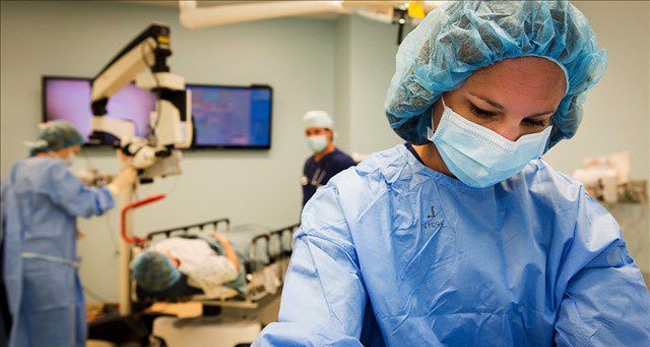
Three-hundred thirty-two thousand Americans have hip replacement every year. For most, the surgery requires a hospital stay, and weeks of rehabilitation. Now, a different approach to surgery is getting patients back on their feet and out of the hospital faster than ever before.
For 63-year-old Mary Farley, lifting up, stepping down and bending over are cause to celebrate. For more than eight years, she lived with worn-out hip joints.
Farley told Ivanhoe, “Bone on bone pain. There is absolutely nothing like it. It is excruciating. It’s awful. It’s just awful.”
For Farley, traditional hip surgery was not something she wanted to consider.
“I wanted to wait because of all the horror stories you hear,” said Farley.
In order to replace the damaged hip, surgeons traditionally start at the back, splitting the muscle and releasing tendons from the back of the hip joint.
Julius Huebner, M.D., an orthopedic surgeon at Allegheny Health Network in Pittsburgh, Pennsylvania, is one of an increasing number of specialists performing hip replacement from the front of the joint. It’s called the anterior approach.
“By not splitting the muscle, not dividing it, we’re able to move them to the side and go between them,” Dr. Huebner told Ivanhoe.
Once doctors get to the joint, the procedure is the same. They remove the damaged hip and replace it with an artificial one, but because the muscle isn’t split, recovery is faster.
“Probably about one-tenth of my patients go home the same day as the surgery. They leave right from the recovery room,” said Dr. Huebner.
Farley had both hips replaced at the same time; one recovery instead of two. She was moving well, and pain-free within a few weeks.
Farley said, “For me, it was life-changing.”
Dr. Huebner said the anterior approach has not been done frequently in the past because it requires additional training for surgeons. He also said with an approach from the front, replacing both hips at once can be done safely in patients under the age of 65.